- Home
- TV History
- Network Studios History
- Cameras
- Archives
- Viewseum
- About / Comments
Skip to content
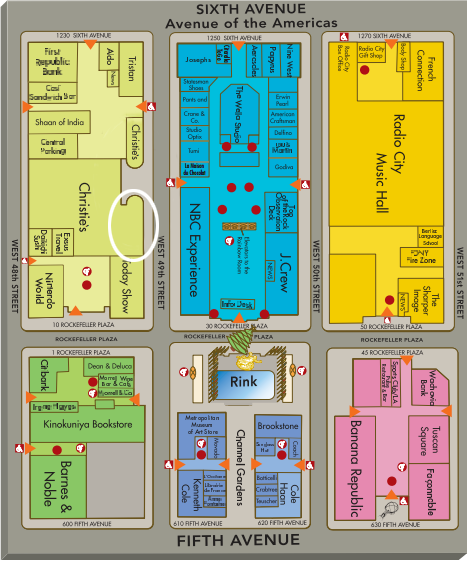





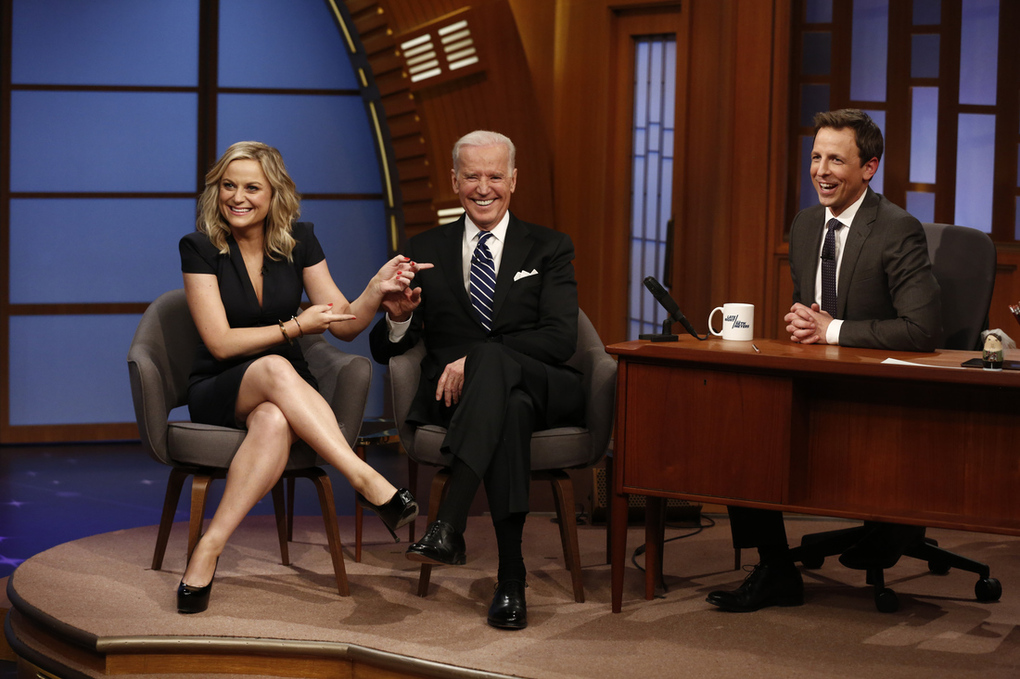



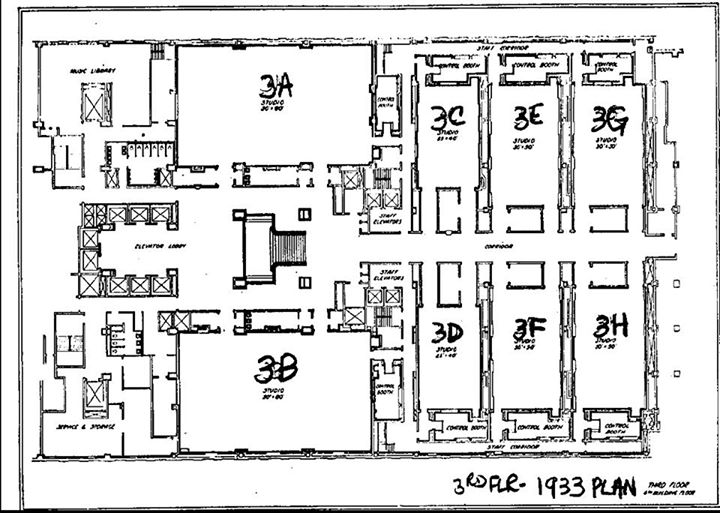

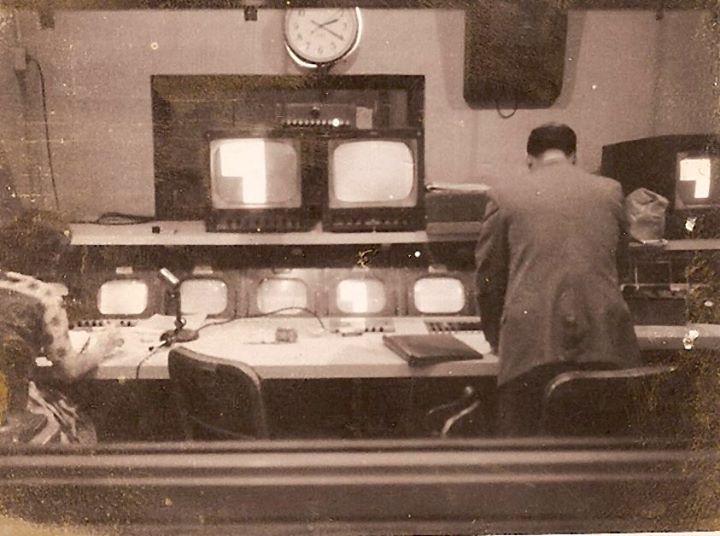

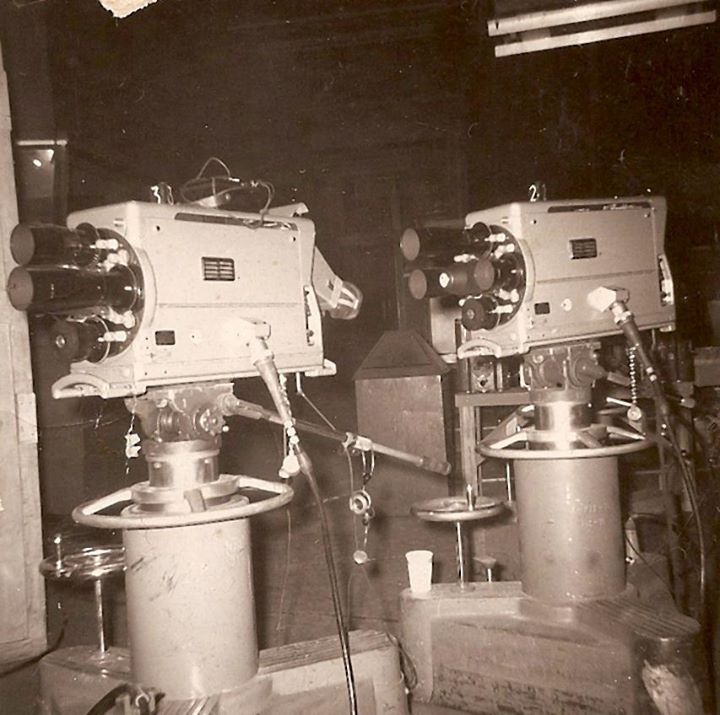

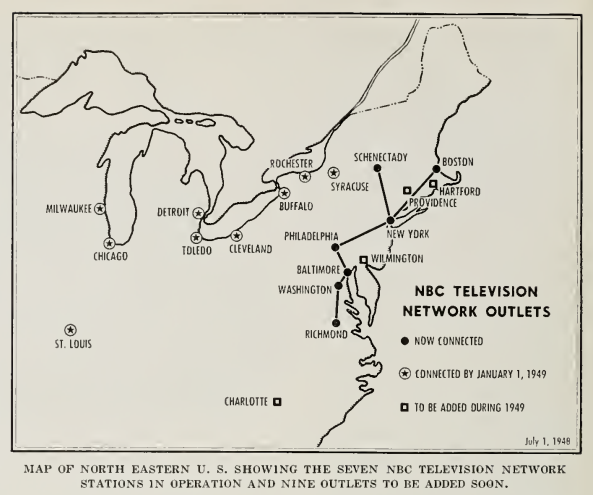

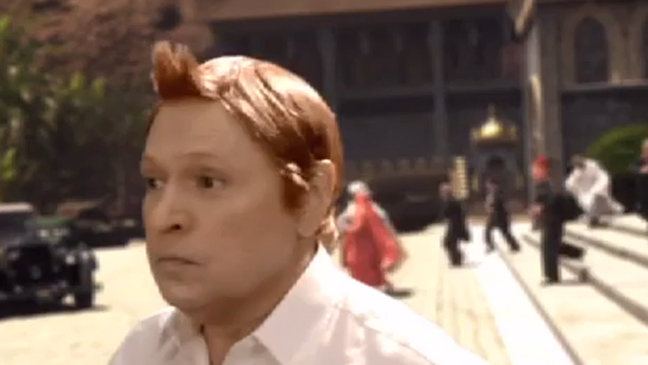

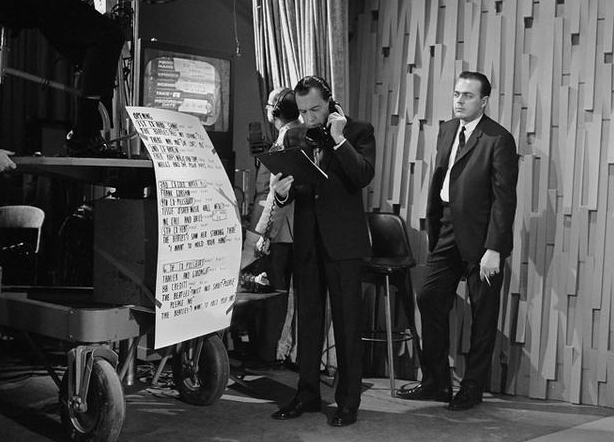

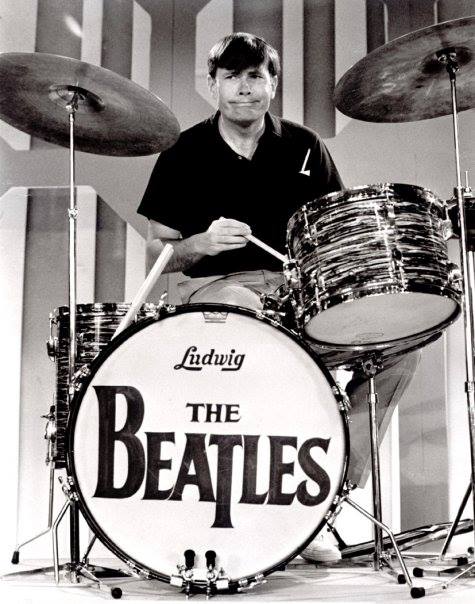

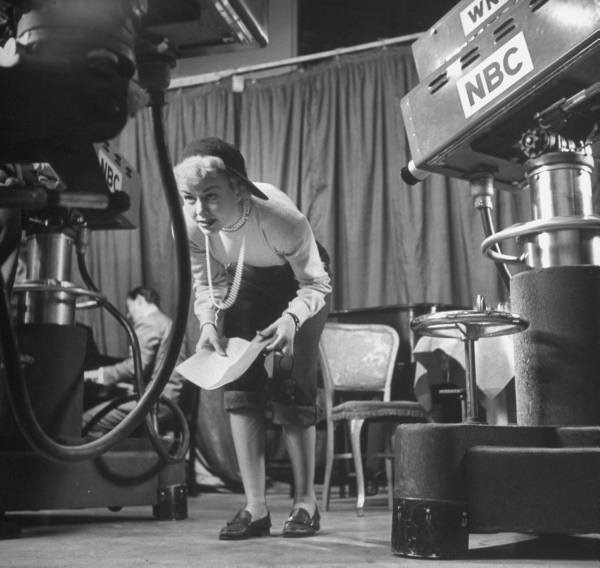

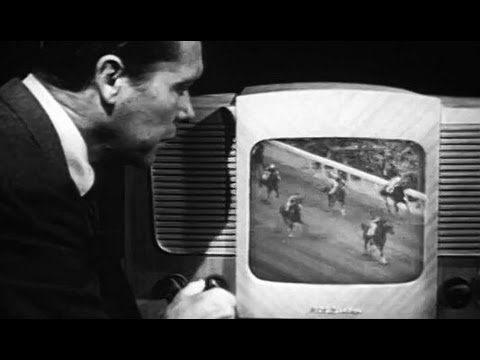

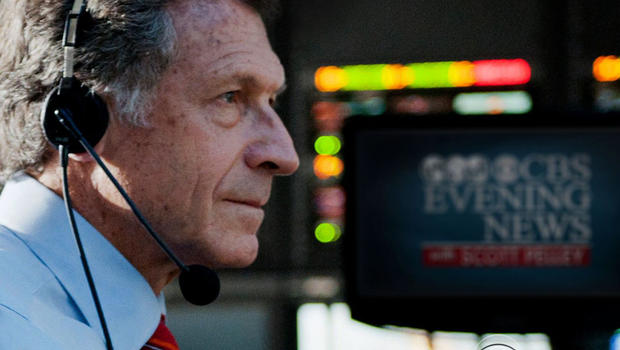

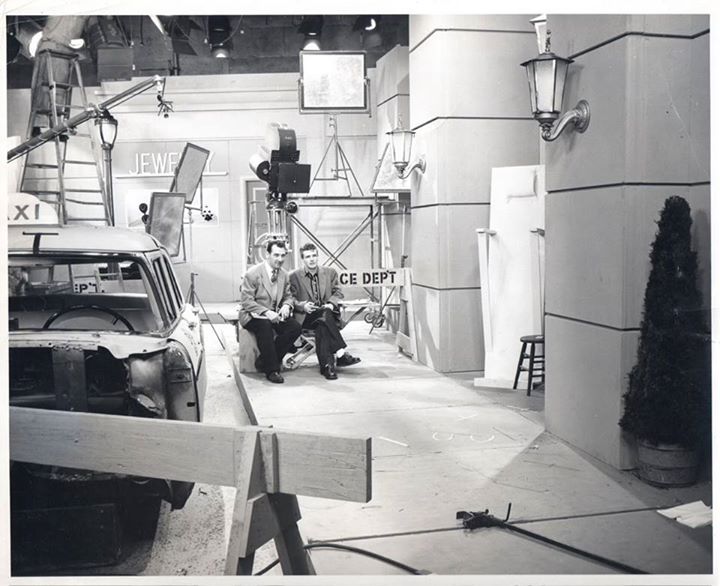





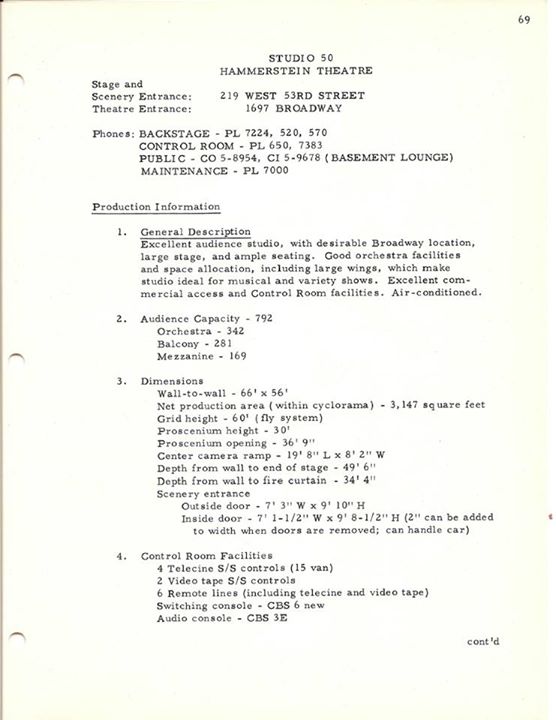

Posts in Category: TV History
Page 91 of 136
« Previous
1
2
3
4
5
6
7
8
9
10
11
12
13
14
15
16
17
18
19
20
21
22
23
24
25
26
27
28
29
30
31
32
33
34
35
36
37
38
39
40
41
42
43
44
45
46
47
48
49
50
51
52
53
54
55
56
57
58
59
60
61
62
63
64
65
66
67
68
69
70
71
72
73
74
75
76
77
78
79
80
81
82
83
84
85
86
87
88
89
90
91
92
93
94
95
96
97
98
99
100
101
102
103
104
105
106
107
108
109
110
111
112
113
114
115
116
117
118
119
120
121
122
123
124
125
126
127
128
129
130
131
132
133
134
135
136
Next » So Close, So Far Away…The ‘Today’ Show’s Original Home
On February 26, 2014
- TV History
So Close, So Far Away…The ‘Today’ Show’s Original Home
Circled in white is the ‘Today’ show’s original studio location. When the show debuted January 14th of 1952, this part of the building that is now occupied by Christie’s (auction house) was called The RCA Exhibition Hall. In the summer of 1958, television manufacturer Philco complained to NBC that staging ‘Today’ in a studio explicitly called the RCA Exhibition Hall was unfair (RCA owned NBC at the time). The network bowed to the pressure, and on July 7, 1958, Today moved across the street to Studio 3K in the RCA Building, where it remained through the early 1960s. On July 9, 1962, the program returned to a street side studio in the space then occupied by what was called “the Florida Showcase”. No one that I know, knows exactly where that was, but I think it was possibly just above where the white oval is in the twin space of where the RCA Exhibit was. Do you know? By ’65, NBC had gone all color and they moved the show back inside 30 Rock where it stayed for twenty years. In early 1994, NBC bought the Eastern Airlines building and began converting it to a television studio. June 20, 1994, ‘Today’ debuted from street side once again in Studio 1A, where the show remains and that space just under the white oval. Thanks to Dennis Degan for his help with the map.
How Big Are The NBC Studios At 30 Rock?
On February 26, 2014
- TV History
How Big Are The NBC Studios At 30 Rock?
When I saw the Seth Meyers debut Monday night, I wondered why they had not gone with a bigger set, but I had forgotten that with 8H taking up 10,000 square feet of that floor, 8G is actually considerably smaller that the 6th floor studios.


An Oscar Week Favorite…Lewis Horvitz Directing The Awards
On February 26, 2014
- TV History
An Oscar Week Favorite…Lewis Horvitz Directing The Awards
Here’s a video several have requested. From the 69th Annual Academy Awards show, here’s the director in the truck at the Shrine Auditorium on March 24, 1997. Gil Cates produced. Enjoy.


‘Late Night With Seth Meyers’…The Debut Reviews Are In
On February 25, 2014
- TV History
‘Late Night With Seth Meyers’…The Debut Reviews Are In
“Safe” seems to be a key word in several of the pieces I’ve seen this morning. What did you think?
In his ‘Late Night’ debut, Seth Meyers is strong but plays it safe
On March 3rd, 2009, a 34-year old Jimmy Fallon stepped out for his first show as host of NBC’s Late Night, taking over for Conan O’Brien. Fallon, visibly nervous, paced left and right as he ran…
Thank You For Helping Me Make Snowballs! A Personal Message…
On February 25, 2014
- TV History
Thank You For Helping Me Make Snowballs! A Personal Message…
As a body of television history, Eyes Of A Generation is like the snowball that gets bigger and bigger as it rolls down the hill. I am the snowball maker, you guys are the snow covered hill…without which, the snowball would not get any bigger. I am constantly amazed by the extra added facts and information that come from you, and very thankful for your input.
Unfortunately, there is not always solid information out there on the topics we cover here, and due to that, I am not always one hundred percent correct, but I’m doing the best I can with the facts I can find, so please bear with me. The things you ask, send in and add with your comments is incredible and greatly appreciated by all of us playing with this huge puzzle. Those pieces add up and the next time we revisit a past topic, the snowball we start with is a bit bigger, and it’s all thanks to you. I couldn’t do this without you! Each of you! I hope you enjoy the ride! -Bobby Ellerbee
NBC 3rd Floor 1933 Configuration
On February 25, 2014
- TV History
EXCLUSIVE ULTRA RARITY! NBC 3rd Floor 1933 Configuration
For once and for all, this will put to rest any doubts on the history of the conversion of NBC Studio 3H to 3K. Until yesterday, when I received this drawing of the original 1933 radio studio configuration, there had never been a reliable floor plan available anywhere earlier than one from around 2000, and that one only had tiny amounts of this information. Studio 3K was created in the fall of 1955 by combining Studio 3H and 3F and transforming it from black and white to color. Unfortunately, previous reports have stated that 3H was adjacent to 3C and the two were combined to make 3K, but as you can clearly see, that would be impossible.
If you remember, 3H was the first radio studio converted to television in 1935 and served as the home of RCA/NBC’s experimental broadcasts with the Iconoscope cameras and in 1951, the RCA color “coffin cameras” began their tests in 3H. At the time of their combining, 3F was still a radio studio.
Ed Reitan and I have had several conversations about this and with the people we have talked to that were there at the time, we have never doubted this history, but neither of us had never seen this floor plan before which is a great help. You can see Ed’s account of this at his great site, which is now under the care of the Early Television Foundation http://www.earlytelevision.org/Reitan/
I’m not positive, but I think this would be the first operational color studio inside 30 Rockefeller Plaza. NBC began live color operations at the Colonial Theater in 1953 with RCA TK40s. Like in Studio 6B where columns were recently removed for the return of ‘Tonight’, columns were a problem in creating 3K as well and two large columns had to be removed from the wall between 3H and 3F.
We all owe a huge Thank You to our new friend Joel Spector for sharing this drawing, and other floor plans to come, and to Gady Reinhold for introducing me to his childhood friend. Joel started with NBC in 1965 and Gady with CBS in 1966, but as kids and teens, they went to hundreds of live broadcasts all over the city. Joel is now semi retired but still plays all the music on the great Macy’s Thanksgiving Parade annually and works with the legendary Milton Delugg, who at 95, is still the parade’s musical director. Joel was also on the original SNL crew and still does audio occasionally on ‘Nightly News’, ‘Today’ and other shows when needed. More on Joel and Gady soon!
NBC 67th Street Studios Control Room
On February 25, 2014
- TV History
NBC 67th Street Studios Control Room
In the two ‘Password’ posts just before this, we go over a lot of the history of this studio, but here is a one of a kind shot from our friend Gady Reinhold. ‘From These Roots’ was in rehearsal at the time Gady took this shot around 1959. This NBC soap opera, which ran from June 1958 till the fall of 1961, was created and written by Frank Provo and John Pickard. This was the first successful daytime drama for Ann Flood who later became well known for, and spent the better part of two decades playing Nancy Karr on ‘The Edge of Night’. The show was directed by Joseph Behar and featured a storyline dealing with the show-within-a-show. Gady also took the photos inside the Video Tape Center (which this property became in late 1961) in the prior post. Many Thanks Gady!
Video Tape Center
On February 25, 2014
- TV History
The Password Is “Video Tape Center”…The Answer, Part 2
From time to time, all of the networks leased studio space in New York outside of their usual production facilities. In the early ’50s, CBS even leased a couple of studios at Dumont and that’s why occasionally, we see pictures of Dumont cameras on CBS sets. The ‘Password’ episode below was taped at Video Tape Center at the
67th Street Studios at 101 West 67th Street. NBC had leased that property in the early ’50s and that’s were ‘The Home Show’ with Arlene Francis (1954-1957) originated, as well as the ‘Concentration’ primetime version in 1958 in Studio A.
NBC sold the property in 1961 and it was bought by Ampex which owned The Video Tape Center. Ampex was also the US distributor for Marconi, thus the Mark IV cameras in the photos. They kept the property from 1961-1970 and more than likely the ‘Password’ video in the prior post was shot with Marconi Mark VII color cameras, although early on VTC had access to RCA TK41s as well via a mobile production truck parked outside. These photos are from the very early VTC days and show some RCA color equipment left by NBC and new Marconi CCUs as well. This building originally had four studios which were later converted to two.
Video Tape Center was always more than just a first class production house though. Ampex used the facility to develop new tape technologies as well, and what better place? A lot of innovate commercials came out of VTP including the Hertz spots that “put you in the drivers seat”. The linked spot was shot on film in Miami, but the fly in effect was achieved in the VTC studio and editing suites. http://www.youtube.com/watch?v=M4cseXC3ols
After VTC sold the property, this became ABC Studio TV-18/19 (1970 to 1990), and was the production facility for ‘All My Children’ and ‘One Live to Live’ before they moved to ABC TV-17. Demolished in 1995, the site is now the fifty story Millennium Tower apartment building.
NBC Television Network Map…July 1, 1948
On February 24, 2014
- TV History
NBC Television Network Map…July 1, 1948
In early 1946, NBC’s television network consisted of only NYC and Philadelphia. By early 1947, Schenectady joined in making it a three city linkup. This 1948 map shows that Boston, Baltimore, Washington and Richmond have been added making seven cities linked in the network. Twelve more will be added during 1949. There were more NBC television affiliate stations than are shown here, but their programs arrived in the mail as kinescope films. Only in the linked cities could the same episodes of the same shows be seen at a regularly scheduled time. Shows that aired on a Monday on the network may have aired on Friday at unlinked affiliates. By 1952, pretty much all of the affiliates for all networks nation wide were linked in, but even up into the early 1960s, some stations were affiliated with more than one network and would pick and choose the shows they aired locally, and would take those shows as they were fed down the AT&T network lines.


Director Troy Miller…Another Of His Great Opening Parodies
On February 24, 2014
- TV History
Director Troy Miller…Another Of His Great Opening Parodies
This is another of Troy Miller’s Oscar openings described in the article posted earlier today. This is from the 2012 awards show and the video is available inside this “Hollywood Reporter” article.
Great work from Troy and company, as usual! Enjoy!
http://www.hollywoodreporter.com/race/oscars-billy-crystal-movie-montage-justin-bieber-295229
Oscars 2012: Billy Crystal Spoofs the Year in Film With Help From Justin Bieber, George Clooney…
Billy Crystal kicked off the 84th Annual Academy Awards with the long-held tradition of recognizing the year in film. In his signature style, the nine-time Oscar host filmed a video montage, injecting himself into the main plot lines of the most memorable movies of the past year. PHOTOS: Oscars 2012…
Meet Sullivan Associate Producer, Jacques Andre
On February 23, 2014
- TV History
Meet Sullivan Associate Producer, Jacques Andre
On Sunday nights, between 8 and 9 PM, Jacques was the “middle man” on ‘The Ed Sullivan Show’. During the week, he worked for producer Bob Precht, but on show night, he stood with Ed at the side of the stage keeping the show’s running time and was the hub between the control room, stage manager Eddie Brinkmann and Sullivan. Although quite capable, he would always feel the need throw up before each show. Below, Jacques is holding the Q card and on the left is standing behind Ed. He looks a little different as the left photo is three weeks after the tape session and live show and was taken during dress rehearsal of the February 23 show. In the monitor, you can see the tape slate for the Beatles video insert. The Q card on the boom has at the top, the band members names and the second two blurbs list the songs in each set.
A Meeting Of The Minds…The Directors And The Beatles
On February 23, 2014
- TV History
A Meeting Of The Minds…The Directors And The Beatles
The photo above was shot after the Saturday morning rehearsal on February 8, 1964…the more relaxed day of the weekend. In one of the world’s most unique photos, we find assistant director John Moffit posed behind Ringo’s black oyster pearl Ludwig drums (without his glasses). In the center we see Sullivan director Tim Kiley writing and behind him (with glasses) is assistant director John Moffit with Paul and Ringo. On the bottom, John Moffit and Tim Kiley with the whole band on Sunday morning.
The Huge Mystery Of The NBC ND-8G Cameras…Part 2
On February 22, 2014
- TV History
The Huge Mystery Of The NBC ND-8G Cameras…Part 2
In yesterday’s “The Huge Mystery Of The NBC ND-8G Cameras…A Discussion” post, I danced around a nagging question till I got more sources and last night, I got them*. Here’s the problem: if 8G went live on April 22, 1948, how is it that ‘Hour Glass’ and ‘Television Scene Magazine’ are shot with the NBC ND-8G cameras over a year earlier? FYI, both shows were two of NBC television’s first network shows. ‘Hour Glass’ stared May 9, 1946 and ended March 6, 1947 and the other one stared November 17, 1946. The photo on the right is Ursula Holleran of ‘Television Scene Magazine’ and all of the others are on the ‘Hour Glass’ set and the blonde “femcee” is Helen Parish. The date of the NBC/Pathe film in another of today’s posts is also 1947. The studio is too big to not be 8G as the only other studio at the time was the smaller 3H. In yesterday’s post, I also discussed the mystery of why NBC would build their own Image Orthicon cameras in 1947 and put them in service in 1948 when RCA delivered the first TK30s to them in June of 1946. Yesterday, I suggested that these cameras may have first been put to use in 3H before they went to 8G when it was completed. Another train of thought leads me to wonder why NBC would keep these ND 8G cameras in use when they had the superior RCA TK30?
I want your input and research info into this, but as of now…here’s what I think. Given the mad rush at the end of WWII for broadcasters to get television back in gear, I think the ND 8G cameras were actually in operation by early 1946. I think the 1969 “RCA Engineer” article (which was the basis for much of this information and linked in yesterday’s post and below), written twenty plus years after the fact, is ambiguous on several key issues and wrong on some dates. I’m feel sure RCA would have given NBC Image Orthicon tubes “early” (in spite of the military’s wishes) at least to “test” (wink, wink). Keep in mind that by July 16, 1947 RCA had demonstrated the first all electronic color camera with three IO tubes. Although NBC was leasing theaters to convert to studios, production space was at a premium as nothing new had been built for four years, so immediately adding a new studio inside 30 Rock, would have made sense. This leads me to think that 8G may have been converted earlier than 1948. The only source for the April 22, 1948 debut date of 8G is a 1948 “Radio Age” article which was reproduced in yesterday’s post and linked below.
Are both wrong? Are both right? Is one wrong and one right? I don’t know. I do know that this new photo dating evidence makes me wonder though! As we’ve seen before, even NBC’s marquees outside their famous studios have errors and omissions which, in the case of television’s history, seems to be the human condition.
What do you think? To read all the background info, go here
https://eyesofageneration.com/the-nbc-nd-8g-cameras/
* The dates of the shows is verified in “The Complete Directory To Prime Time And Cable TV Shows” by Brooks and Marsh.


NBC Studio 8G Cameras In Action…1947
On February 22, 2014
- TV History, Viewseum
NBC Studio 8G Cameras In Action…1947
This video begins the television portion of this excellent look inside NBC’s 30 Rock studios. The cameras are the NBC built “ND-8G” Image Orthicons and are shooting a rehearsal of ‘Hour Glass’…one of NBC TV’s first shows that we’ll cover in detail in another post. For the whole backstory, go to this link.
Eric Shapiro’s Final Fade To Black As ‘CBS Evening News’ Director
On February 22, 2014
- TV History
Eric Shapiro’s Final Fade To Black As ‘CBS Evening News’ Director
Well done sir…well done! Hail and farewell.
“CBS Evening News” director ending 51-year CBS career at the top
Director Eric Shapiro started at CBS in 1963 as a mail boy, working his way up with legendary director Don Hewitt as his inspiration
From The Eddie Brinkmann Archival Collection
On February 21, 2014
- TV History
From The Eddie Brinkmann Archival Collection
On a Sullivan show trip west to Television City, Eddie visits with director Ezra Stone on the ‘Bachelor Father’ set at Review Studios. When Stone’s acting life with ‘The Aldrich Family’ radio show ended, he turned primarily to directing on stage and in television—ironically, his first television directing assignment was the television version of ‘The Aldrich Family’ in 1952. From there he went on to direct for numerous shows, including ‘I Married Joan’, ‘Bachelor Father’, ‘Bob Hope Presents the Chrysler Theater’, ‘Lassie’, ‘The Munsters’, ‘Lost in Space’, ‘Julia’, and ‘Love, American Style’.


NBC’s ‘All Star Review’ Full Episode
On February 20, 2014
- TV History
NBC’s ‘All Star Review’
In the post just before this, Jackie Gleason mentioned in a letter to Eddie Brinkmann that they “had their competition at NBC on the run”. Jackie’s competition for his first season at CBS was NBC’s ‘All Star Revue’. A rare full episode is here for you to watch. Notice at the start, the show billboards as stars Jack Carter, Jimmy Durante, Olson & Johnson, Danny Thomas and Ed Wynn, however…they did not all appear on each episode. They would rotate on a weekly basis and this May 10, 1952 episode was Danny Thomas’s turn. After Gleason hit the air, Martha Raye was added to the line up and the line up was cut to four which eliminated two hosts. By the end of the 52-53 season, Martha was the sole host. In the 53-54 season, the show’s name changed to ‘The Martha Raye Show’ which ran once a month in place of ‘Your Show Of Shows’. One of these sketches is about a woman president…it’s funny. Enjoy!
Reliving History…More Of The Eddie Brinkmann Papers
On February 20, 2014
- TV History
Reliving History…More Of The Eddie Brinkmann Papers
‘The Jackie Gleason Show’ debuted on CBS September 20, 1952. Less than three months into his new show, he wrote this letter to his Studio 50 stage manager…Eddie Brinkmann. At the time, Eddie was also stage managing Ed Sullivan’s ‘Toast Of The Town’ from CBS Studio 51, which was the Maxine Elliot Theater. (Sullivan did not move to 50 until late in 1953.) Notice Jackie says “we have our NBC competition on the run”. Who was that? NBC’s ‘All Star Review’. In the next post, I’ll link to a rare full episode. Thanks to Eddie’s granddaughter Dee Wexler for sharing this.
Rare! CBS Studio 50 Spec Sheets…1960
On February 20, 2014
- TV History
Ultra Rare! CBS Studio 50 Spec Sheets…1960
In order to rent studio space to producers, networks have detailed information on their properties to pass along. From the 1960 CBS property book, this is the 3 page description of Studio 50, which of course is now The Ed Sullivan Theater and Letteman’s home. Looking at this diagram drawn to scale, it is amazing how little backstage room there is on the left side (stage right). For those of you like me, who wondered…the center camera ramp is 19 feet, 8 inches long and 8′ and 2″ wide. I’ll post the best high shot of the stage I have in the Comment section below to help with the visual.
Page 91 of 136
« Previous
1
2
3
4
5
6
7
8
9
10
11
12
13
14
15
16
17
18
19
20
21
22
23
24
25
26
27
28
29
30
31
32
33
34
35
36
37
38
39
40
41
42
43
44
45
46
47
48
49
50
51
52
53
54
55
56
57
58
59
60
61
62
63
64
65
66
67
68
69
70
71
72
73
74
75
76
77
78
79
80
81
82
83
84
85
86
87
88
89
90
91
92
93
94
95
96
97
98
99
100
101
102
103
104
105
106
107
108
109
110
111
112
113
114
115
116
117
118
119
120
121
122
123
124
125
126
127
128
129
130
131
132
133
134
135
136
Next »